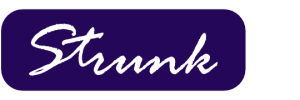Top 10 Overdraft Program Questions
Strunk offers overdraft privilege training to our clients to provide consistency on how the employees view the program and how the employees present the program to their consumers. When providing training we will sometimes get questions on how to handle specific areas of the program. Here are the 10 most frequently asked questions during overdraft privilege training and the response to those questions.
1. Does a consumer have to opt in to have overdraft privilege on their account?
No, a consumer does not have to opt in to have the “standard overdraft practice” on their account. The “standard overdraft practice” pay overdrafts for Checks, In-person withdrawals, ACH transactions, Pre-authorized automatic transfers, Automatic bill payments, Recurring debit card transactions, Internet banking transfers and telephone banking transactions. A consumer only has to opt in to have their Everyday debit card transactions and their ATM transactions cover under the overdraft privilege program.
2. When does a financial institution have to take a consumer out of the overdraft privilege program for Excessive Use?
Never, financial institutions should never take a consumer out of the overdraft privilege program because they use it. The key is not whether the account has had a lot of overdrafts, but rather, whether the account holder has made deposits sufficient to cover the overdrafts in a timely manner.
3. Does a consumer have to sign the Reg. E opt in form to have their debit card point of sale transactions and their ATM transactions covered?
No, a consumer only has to consent to have their debit card point of sale tractions and their ATM transactions covered under the overdraft privilege program. The regulation provides for four methods to obtain an opt-in (consent): 1) by completing the form, 2) in person, 3) over the phone, and 4) electronically. The financial institution should make the best possible use of all of these methods.
4. How can the financial institution differentiate between a recurring debit card transaction and a nonrecurring one?
Financial Institution must comply with the Reg. E rule if it adapts its system to identify debit card transactions as either onetime or recurring. If it does so, the financial institution may rely on the transaction’s coding by merchants, other institutions, and other third parties as a one-time or preauthorized or recurring debit card transaction.
5. Do business accounts have to opt into Reg. E?
No, Reg. E is a consumer regulation. Business accounts do not have to opt in to have their debit card or ATM transactions covered under the overdraft privilege program.
6. Does the Overdraft Privilege Joint guidance address the order in which charges are posted?
No, the Federal Register continues to assess whether additional regulatory action relating to overdraft services is needed, but nothing yet.
7. Do both parties have to opt into Reg. E on joint accounts?
If two or more consumers jointly hold an account, the financial institution must treat the affirmative consent of any of the joint consumers as affirmative consent for the account. Similarly, the financial institution must treat a revocation of affirmative consent by any of the joint consumers as revocation of consent for that account.
8. Once a consumer pays back their Fresh Start Loan, can that consumer have their overdraft limit back?
Yes, once the consumers Fresh Start Loan is paid back in full and their account is in ‘good standings’, then their overdraft limit should be added back to their account.
9. Can a consumer have more than 4 payments on their Fresh Start Loan?
No, a consumer can only have 4 monthly payments on their Fresh Start Loan. To qualify as incidental credit under Reg. B (for Reg. Z not to apply) and to avoid limitations under The Military Lending Act, the number of payments must be limited to 4 and no interest or fees are charged on the loan.
10. Once an account is no longer suspended, when should that consumer get their overdraft limit back on their account?
Once a consumer account is in ‘good standing’ then that consumer should have an overdraft limit on their account.



